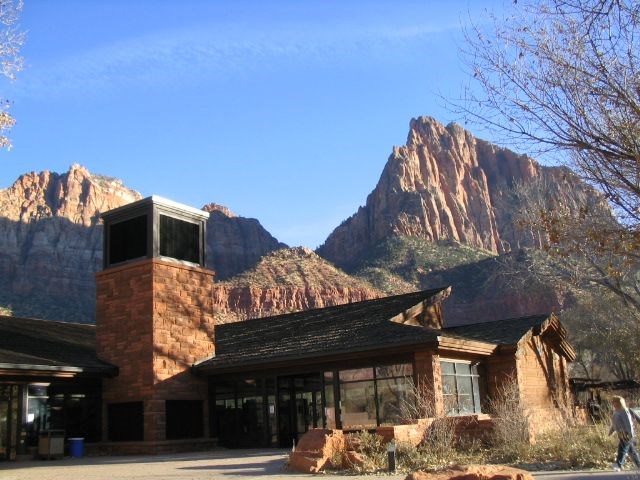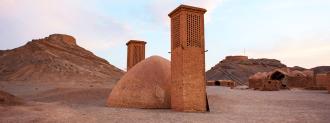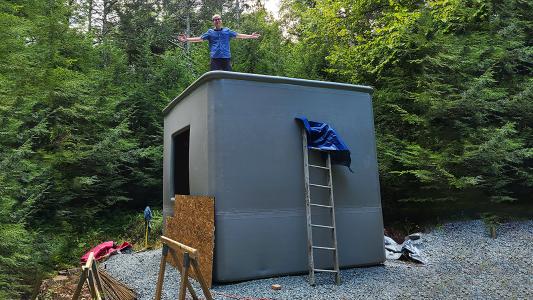This article was originally published on Freethink in September 2021. It was updated in October 2022.
The summer heat waves might be behind us, but don’t brush them off just yet. Temperatures are increasing (July 2021 was the hottest month on record), and we can expect it to keep getting hotter. How will we cope, besides cranking up the AC?
People from Ancient Egypt to the Persian Empire have been beating the heat for millennia. And their solution, the “wind catcher,” could help us once more in our quest for emissions-free cooling.
The problem: It is hot. It is going to get hotter.
Nearly 90% of all U.S. homes are equipped with air conditioners, and air conditioning accounts for 12% of residential energy use. Besides the fossil fuels that power them, many use refrigerants to cool the air, which can be potent greenhouse gasses if released.
Ironically, the warmer it gets, the more cool air we blast and the more electricity we consume.
In addition, air conditioners cool us down by capturing heat from the interior of buildings, but they expel that heat outside, directly warming the environment and contributing to the urban heat island effect.
And ironically, the warmer it gets, the more cool air we blast and the more electricity we consume.
The solution: Innovators are working hard to find ways to cope with the new normal — extreme heat and rising temperatures. The creativity is high, from apps that help pedestrians find cool walks and shady spots to next-generation technologies like cooling paper and ultra-white paint that can lower the temperature inside homes.
Although heatwaves are encroaching on otherwise cool climates, there have always been hot places on the planet. And if people live there, then they’ve found ways to manage the heat.
Because wind catchers cool a building without using electricity or fuel, they are an attractive green solution.
In the hot, arid Iranian Plateau, ancient structures, called “wind catchers,” are attracting academics, engineers, and architects who want to find creative new (and old) ways to cool off.
The wind catchers, or bâdgir in Persian, are common structures that extend above the rooftops in rectangular towers, reports BBC. They made life livable. And, because they cool a building without using electricity or fuel, they are an attractive green solution.
How it works: Wind catchers are tall, chimney-like structures that extend from the roof of a building. They harness cool wind and direct it throughout the structure.
Wind catchers are designed differently based on the prevailing winds and temperatures in a local region. The most uncomplicated design faces the tower opening toward the prevailing wind to create natural ventilation. But local climates are complicated, and often wind catchers had many features: filters, passive cooling systems (by passing hot air over cool water), or multiple openings to account for varied wind directions.
Researchers at Weber State University in the United States told Sustainability Times that “these systems were eventually refined to the point that they could, at times, reach refrigeration temperatures.”
Many things were considered when designing a tower — the layout of the building, the addition of internal blades, etc. — to optimize how the cool air was drawn into the home and hot air expelled.
Resurrecting ancient tech: Parham Kheirkhah Sangdeh, a researcher at Ilam University in Iran, studies the scientific application and culture of wind catchers in contemporary architecture. He says that pests, dust, and debris motivated people to stop using traditional wind catchers and adopt Western technology.
“There needs to be some changes in cultural perspectives to use these technologies. People need to keep an eye on the past and understand why energy conservation is important,” Kheirkhah Sangdeh told BBC. “It starts with recognising cultural history and the importance of energy conservation.”

But the technology isn’t gone completely.
Free Running Buildings is a startup creating commercially available products in the UK based on ancient wind towers. Their “FREECOOL” technology tops the newly renovated Khalifa International Stadium in Doha, Qatar — just in time for the 2022 FIFA World Cup.
MAS Architecture Studio in Dubai created a wind tower to keep students cool, using 480 layers of recycled cardboard. The Kensington Oval, a stadium on Barbados, has a single giant wind scoop affixed to the top. A windcatcher was used in the visitor center at Zion National Park, Utah. And I have two dorade vents keeping the cabin of my sailboat cool.
We’d love to hear from you! If you have a comment about this article or if you have a tip for a future Freethink story, please email us at [email protected].






